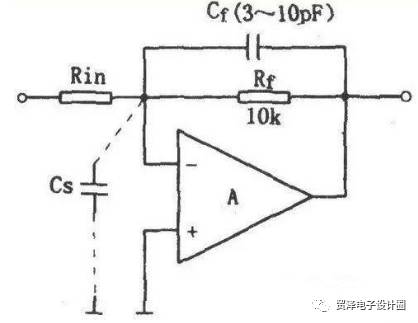**Phase Compensation of the Op-Amp**
In order for an operational amplifier (op-amp) to function properly and maintain stability, a phase compensation capacitor is often added between the input and output in the circuit. This small component plays a critical role in preventing oscillation and ensuring that the amplifier performs as expected.
**1. About the Compensation Capacitor**
While there are theoretical calculations involved in determining the exact value of the compensation capacitor, most engineers rely on experience and practical testing during the design process. The key consideration is the frequency response of the system. In general, the larger the capacitance, the narrower the bandwidth becomes, which can lead to instability or oscillation if not managed carefully. If you do need to calculate it, you can look at the input parasitic capacitance of the op-amp. For example, in a negative feedback amplifier, the product of the feedback resistor and the desired capacitance should be considered to ensure proper phase margin.
**2. Two Roles of the Compensation Capacitor**
- **Adjusting Phase Shift:** The capacitor helps adjust the phase shift introduced by the feedback network, compensating for the inherent phase lag of the op-amp.
- **Reducing Input Capacitance Effects:** It also helps counteract the effects of the input capacitance of the op-amp itself, which can cause instability if left unaddressed.
Since real-world op-amps are not ideal, they introduce some phase shift at certain frequencies. When this signal is fed back to the input, it can cause the amplifier to become unstable or even oscillate. To prevent this, a compensation capacitor is typically included within the op-amp, but it can also be added externally when needed. The value of the capacitor depends on the signal frequency and the characteristics of the circuit.

The input parasitic capacitance (Cs) of a linear op-amp affects the stability of the circuit. This capacitance includes both the internal input capacitance of the op-amp and any distributed capacitance from the wiring. When combined with the feedback resistor (Rf), it creates a lagging network, causing the output voltage to lag in phase at high frequencies. This can degrade the high-frequency response of the amplifier, with the upper frequency limit approximately given by:
$$
\omega_h = \frac{1}{2\pi R_f C_s}
$$
If Rf is large, the upper frequency limit is significantly reduced, and the additional phase lag may cause unwanted oscillations. A simple solution is to reduce Rf, but this lowers the gain of the amplifier. A more effective method is to add a compensation capacitor (Cf) across Rf, forming a phase compensation network. This allows the RinCf network to provide a leading phase shift, balancing out the lag caused by Rf and Cs. Since Cs is not precisely known, full compensation is difficult, so variable capacitors are often used to fine-tune the phase shift through trial and error. Typically, for Rf = 10 kΩ, the value of Cf ranges from 3 to 10 pF. In a voltage follower configuration, the value of Cf can be slightly higher.
**Op-Amp Output Capacitor Compensation**

When the output load capacitance (CL) is much greater than 100 pF, the combination of the output capacitance (including parasitic capacitance) and the output resistance can cause additional phase shifts. These shifts can accumulate and lead to parasitic oscillations, making the amplifier unstable. To address this, a series resistor (Ro) is often placed between the op-amp's output and the load, isolating the load capacitance from the amplifier. The feedback resistor (Rf) is then connected after Ro. This setup helps reduce DC attenuation and adds feedback. The capacitor (Cf) further reduces the high-frequency closed-loop gain. The selection of Cf should ensure that its reactance (Xcf) is less than Rf/10 at the unity gain frequency (fT). Typically, Ro is between 50 and 200 Ω, and Cf is around 3 to 10 pF.
Other sources of instability can come from the integrated chip itself or from the system’s power supply coupling. While these issues can be challenging to resolve, proper compensation techniques often provide effective solutions. For instance, overcompensation—such as increasing the internal compensation capacitor by a factor of 9—can improve stability in applications where a wide frequency range is not required. This technique has been shown to work well with op-amps like the μA301.
Control Transformer,Switching Power Supply Transformer,High Power Switching Power Supply,Dc Negative Ion Generator
Huizhou Show-Grand Electronics Co., Ltd. , https://www.sgtransformer.com